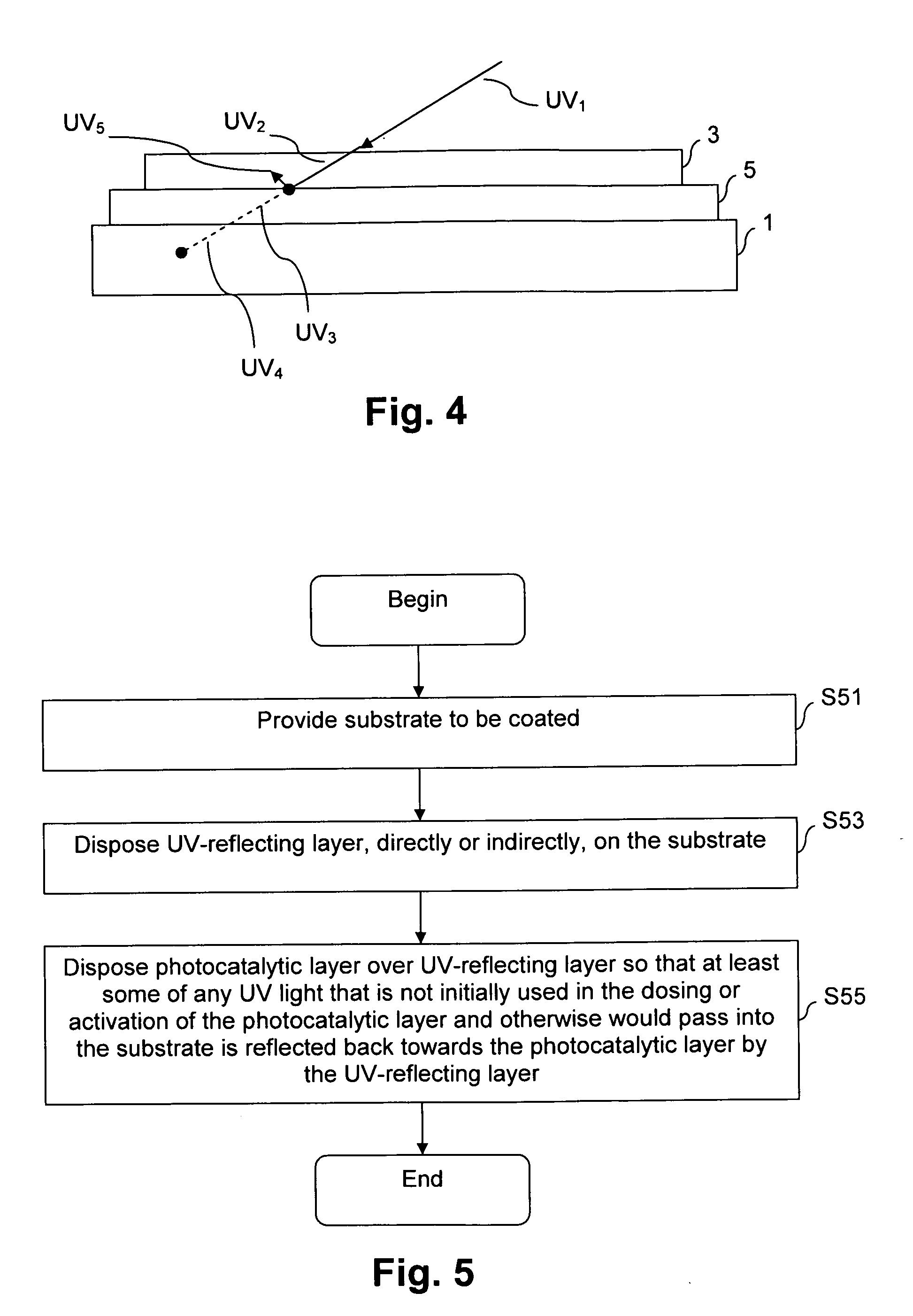Coated article supporting photocatalytic layer and UV-reflecting underlayer, and/or method of making the same
- Summary
- Abstract
- Description
- Claims
- Application Information
AI Technical Summary
Benefits of technology
Problems solved by technology
Method used
Image
Examples
example 1
[0026]As noted above, the UV-reflecting underlayer may be a single or monolithic layer. Accordingly, in this example, the bottom UV-reflecting coating may comprise at least 0.1% by weight aluminum oxide (e.g., Al2O3 or other suitable stoichiometry), and at least 0.1% by weight material having a higher refractive index than the aluminum oxide so that as large a portion of the UV light as possible is reflected and as large a portion of visible light as possible can be emitted. One suitable coating of this sort is described in U.S. Pat. No. 6,906,463, the entire contents of which is hereby incorporated herein by reference. The higher index materials may include, for example, zirconium oxide, yttrium oxide, hafnium oxide, oxides of rare earth metals, etc.
example 2
[0027]As noted above, the UV-reflecting underlayer may be a multilayer structure. Accordingly, in this example, the UV-reflecting coating may comprise a multilayer stack based on materials having matching or substantially matching refractive indexes. For example, U.S. Pat. Nos. 7,169,441 and 5,449,413 disclose various examples of acceptable multilayer coatings that reflect most solar radiations having wavelengths shorter than 350 nm. The entire contents of both U.S. Pat. Nos. 7,169,441 and 5,449,413 are hereby incorporated herein by reference.
[0028]Advantageously, using the techniques of certain example embodiments enables the lifetime of the photocatalytic coating to be extended. It is also noted that the glass substrate may be heat treated in certain example embodiments so that the glass substrate is either heat strengthened (e.g., at a temperature of at least about 200 degrees C., more preferably at least about 250 degrees C.) or thermally tempered (e.g., at a temperature of at l...
PUM
| Property | Measurement | Unit |
|---|---|---|
| Fraction | aaaaa | aaaaa |
| Percent by mass | aaaaa | aaaaa |
| Energy | aaaaa | aaaaa |
Abstract
Description
Claims
Application Information
 Login to View More
Login to View More - R&D
- Intellectual Property
- Life Sciences
- Materials
- Tech Scout
- Unparalleled Data Quality
- Higher Quality Content
- 60% Fewer Hallucinations
Browse by: Latest US Patents, China's latest patents, Technical Efficacy Thesaurus, Application Domain, Technology Topic, Popular Technical Reports.
© 2025 PatSnap. All rights reserved.Legal|Privacy policy|Modern Slavery Act Transparency Statement|Sitemap|About US| Contact US: help@patsnap.com



